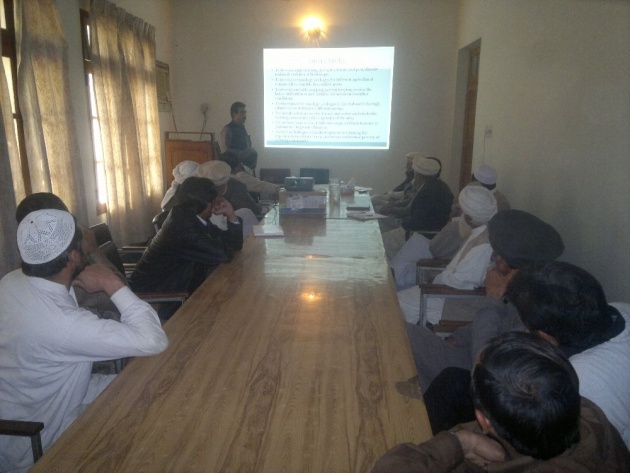Soil is main reserve and store of nutrients for crops and trees which is major natural source of supplying food and shelter to mankind. The population in Pakistan is increasing at an alarming rate of more than 3%, which is putting further pressure on this natural resource. With the continuous cropping, soil looses its native fertility and the goal of self-sufficiency can’t be obtained without the addition of chemical fertilizers. In the process of Agricultural Development, during the past about 63 years, the major break through of high yielding varieties of cereals coupled with higher rates of fertilizer application and other technological aspects like use of herbicides for control of weeds and insecticides for insect pests. These aspects have created concerns about their impact on environment. Worries about the accumulation of nitrates in drinking water and possible pesticide residues in our food supply have caused many people to question the value of major tool of modern agriculture.
Nitrogen comprises 7% of total dry matter of plants and is a constituent of many fundamental cell components such as nucleic acids, amino acids, enzymes, and photosynthetic pigments (Bungard et al., 1999). Ayoub et al., (1994) reported that spilt N application had little effect on yield, but decreased lodging and spike population, while grain weight increased. Nitrogen application at 120 kg/ha for wheat has been recommended by various research workers (Lathwal et al., 1992; Das et al., 1993). Geleto et al., (1995) reported that spike numbers and grain weight were increased with high level of nitrogen. Singh and Uttam (1992) recorded increased grain yield with increase in nitrogen level. Chaudhry et al., (2000) found highest wheat genotype grain and straw yield with NPK @ 120-90-60 Kg ha-1 respectively. Bhatti et al., (1985) recorded better yield of two wheat varieties (Khushal and Maxi Pak) with the application of 92 Kg N, 90 Kg P and 67 kg K2O-ha-1 under rainfed condition.
A nutrient imbalance exists when one or more nutrients are not in applied in proper ratio. This can cause deficiency, toxic level of one or more nutrients or just excess of a nutrient that is not toxic but hinders another nutrient from performing its normal function. A constant and balanced supply of elements is essential to good plant growth, otherwise nutrient deficiencies, toxicities or other effect, will cause plant nutrients stress. So soil analysis is a better diagnostic tool than other methods of fertility evaluation because it gives rapid results before sowing of crop. By knowing the actual status of the soil and application of balanced fertilizers, the maximum and economical crop production can be obtained as well as fertility of the soil could be restored.
The alkaline and calcareous soils of Pakistan are extensively deficient in nitrogen, phosphorus, zinc and organic matter, hence application of fertilizer is considered imperative for increasing crop production (Memon, 1996).
Nutrients are lost from the soil plant system in a number of ways including, leaching, volatilization, de-nitrification, precipitation and fixation by clay minerals. Considerable amount of nutrients are taken up from the soil in harvested crop material. For sustainable agriculture, fertility of the soil must be maintained by adding fertilizers to the soil both in natural and organic form. So it is therefore, imperative to add fertilizers to the soil either in organic or in mineral form to get maximum yield of the crops. The types and amounts of fertilizer to be applied depend on the crop to be grown and nutrient supplying power of soil. It has been reported that judicious and balanced fertilizer can increase crop yield up to 40-50%. The present experiment was designed to determine the optimum levels of NPK for achieving the profitable yield of improved variety (KT-2010) under the agro-climatic conditions of Kohat.




